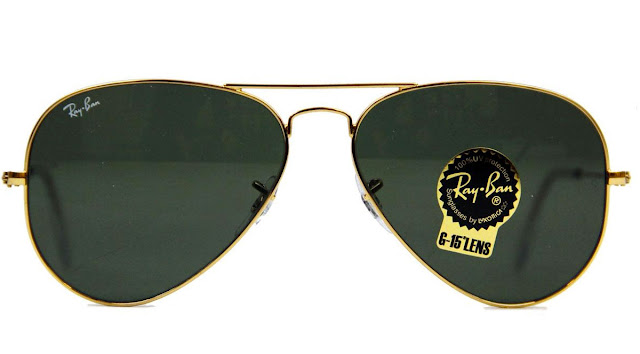"Cool was invented in 1937..."
- The Aviator, Ray-Ban icons
The staple of any Retro Sunglasses collection, the Aviator was developed by Bausch & Lomb (the original owners of Ray-Ban) in 1936 and the design patented in 1937.
In the 1920s, new technology in planes meant that pilots were able to fly higher and for longer periods than previously. Some pilots complained that the extended exposure to the sun's glare was giving them headaches and altitude sickness. In 1929, US Army Air Corps Lieutenant General John MacCready asked Bausch & Lomb, who at the time were a New York-based medical equipment manufacturer, to create a pair of sunglasses that would reduce the headaches and nausea experienced by pilots.
The prototype to the Aviator, then called 'anti-glare' sunglasses, was designed in 1936 with plastic frames and green lenses, designed to cut out the glare without impeding vision. The design was updated to its now instantly recognisable thin metal frame the following year and renamed the Ray-Ban Aviator; Aviator after the pilots and the name Ray-Ban chosen to convey that these sunglasses literally banned the rays from the suns from the wearers eyes. The original design featured Ray-Ban's G-15 tempered glass lenses, transmitting 15% of incoming light. The large lenses are slightly convex shaped, to cover the entire range of the human eye and prevent as much light as possible from entering the eye from any angle.
As well as pilots, other groups of people soon found the Aviator useful for purposes. A couple of years after the classic Aviator was developed, Ray-Ban developed a sister style, The Outdoorsman, specifically for activities such as hunting, fishing and shooting.
In the 1940s, gradient lenses and mirror lenses were introduced. These lenses featured a special coating on the upper part of the lens for extra protection, but an uncoated lower lens for a clear view of an aeroplane's controls and instruments.
 |
| "People of the Philippines: I have returned" - General MacArthur wades ashore in 1944 |
During World War II, the Aviator gained more fame in the mainstream after American army General Douglas MacArthur landed on the beaches in the Philippines in 1944. Dramatic newspaper photographs showed him (and other army personnel) wearing Aviator sunglasses, as they waded ashore. "People of the Philippines: I have returned," said General MacArthur in his speech that day.
In the 1950s and 1960s the Aviator grew in popularity moderately. The oversized style, allowing a lot of coverage for the wearer, meant that soon Aviator sunglasses were being adopted by celebrities and politicians.







